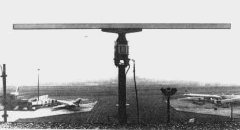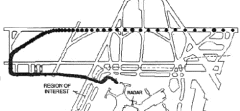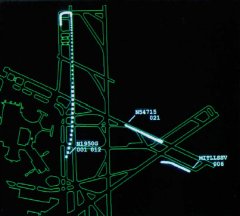Surface Movement Radar


Figure 1: A former X- Band navy radar used as a surface movement radar on the airfield Logan (USA) in 1995
Surface Movement Radar
Surface Movement Radar (SMR) is the most widely used surveillance system for airport surveillance at the present. SMR refers to primary radar that provides surveillance cover for the maneuvering area, which is defined as that used for the take-off, landing, and taxiing of aircraft, excluding aprons.
SMR provides surveillance of all aircraft and vehicles in this area with a high update rate. SMR antennas are often mounted on the tower, which has good visibility of the maneuvering area. (Very big airfields like the Munich Airport, have even a second control tower for its second terminal and the purpose of the airfield taxiway management.) The ground surface environment is quite different from high altitude because of the increased clutter and other physical problems. The quality of surveillance information on the ground is often quite poor and limited by these physical problems.
Use of PSR means that target labeling may not be possible, and hence controllers use visual identification of aircraft (by looking out of the tower window). This is one of the contributing factors to the reduced capacity of airports in low visibility.
SMR use a rotating antenna and the scan rate is usually once per second. They usually operate in the I-, J- and K- Band. Higher resolution SMR operate between 92 and 96 GHz. Most newer SMR products also interface with other local radar; e.g. to Precision Approach Radar and terminal area SSRs. Data processing capabilities that are offered in conjunction with these radar may include runway incursion and conflict alert, and target identification and labeling.
Existing SMR systems are sometimes known by the acronym ASDE - Airport Surface Detection Equipment.
Most airports use Automatic Dependent Surveillance - Broadcast (ADS-B) today. The system also decodes the SSR information, thus providing the capability to „tag” the target with the aircraft call sign. The display in the picture shows the aircraft tagged with their Mode S addresses. These can subsequently be converted to aircraft call sign and flight number.

